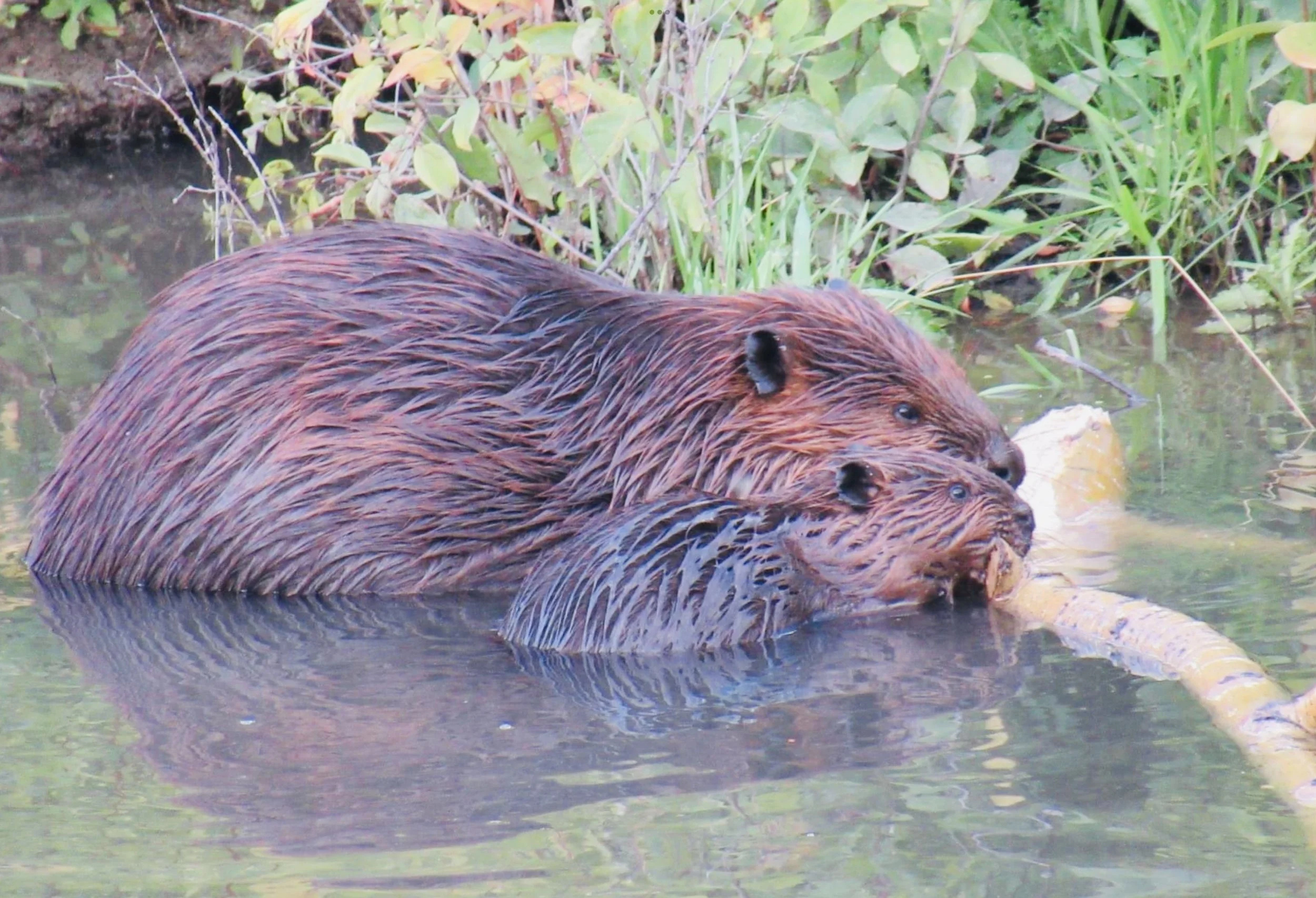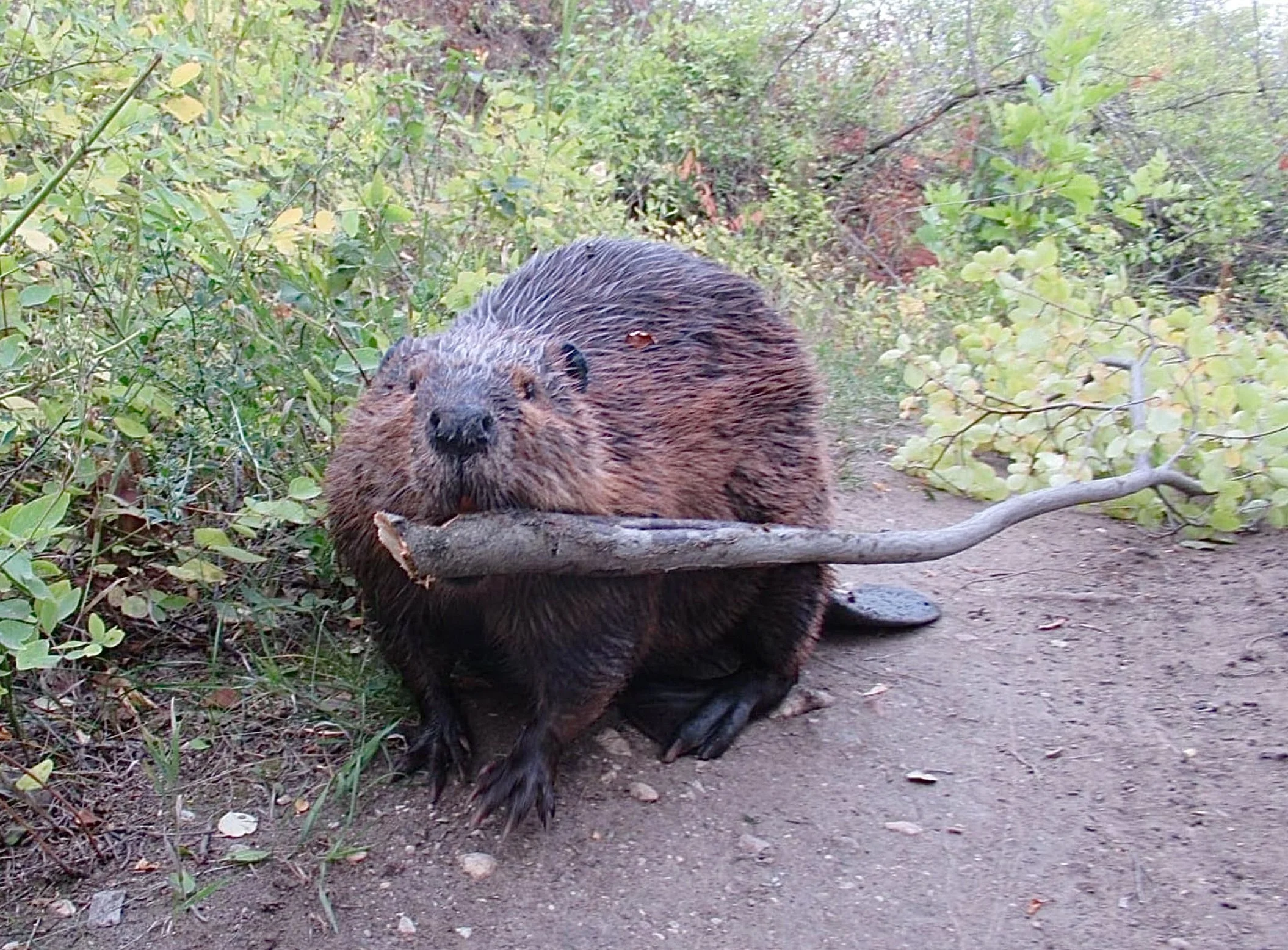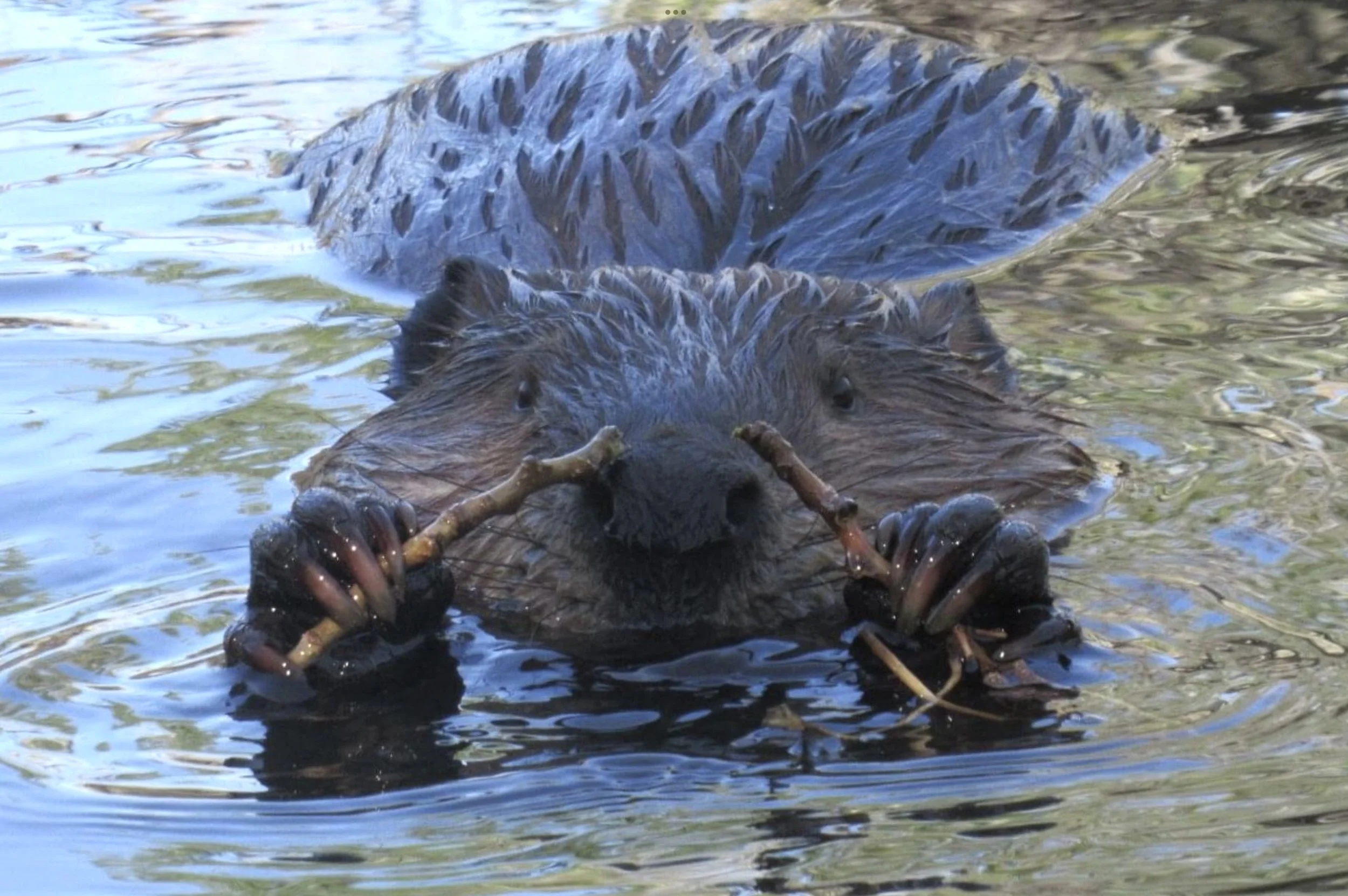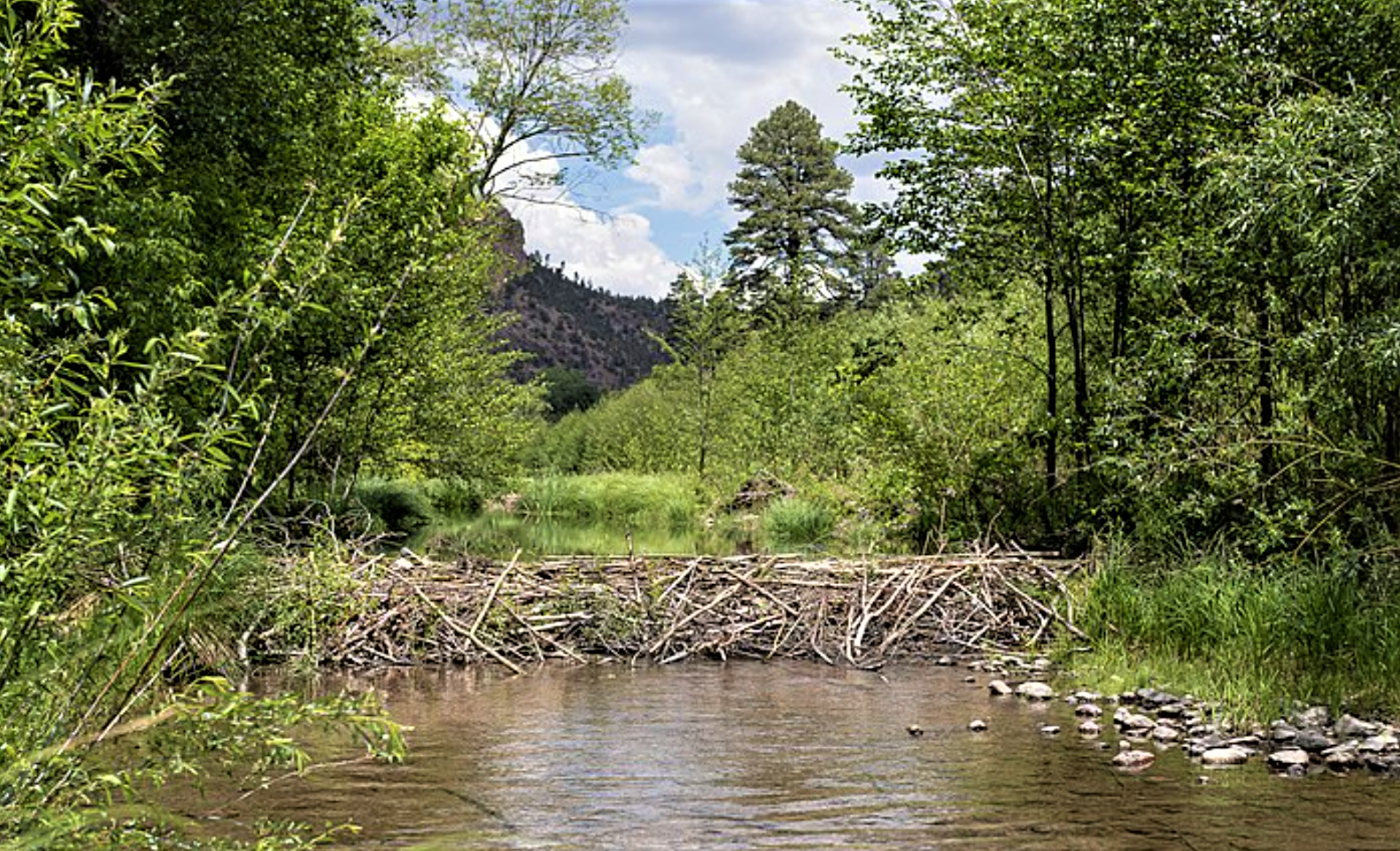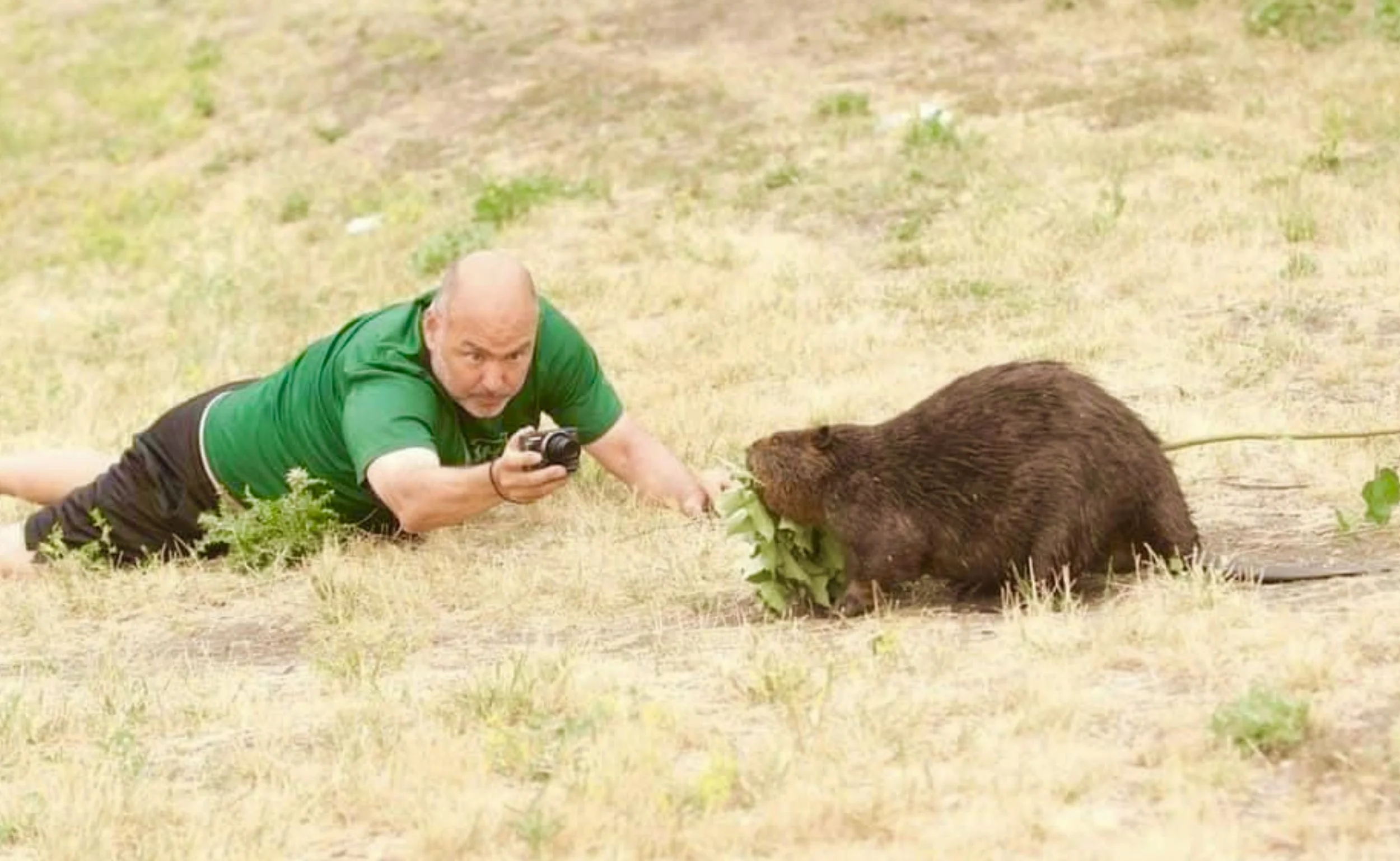By Jessica Scott-Reid
Jessica is a Canadian writer, animal advocate and plant-based food expert. Her work appears regularly in media across Canada and the US.
Mike Digout doesn’t consider himself a wildlife photographer. The 58-year-old government employee rather sees himself more as a wildlife enthusiast and lover of nature, who just happens to have a camera in-hand. In fact, the creator of Mike’s Videos and Photos of Beavers pages on Facebook, Twitter and YouTube, insists that the hundreds of incredible moments he has captured and posted of Canadian beavers, which have amassed over 100,000 followers and millions of views, are just a lucky selection among many more amateur takes.
Instead, Digout credits the beavers, who he describes as “cute and comical” with their yellow teeth, flat tales and floppy feet, as the real draw to his popular platforms. And he hopes his unlikely viral posts might help grow some much-needed love and appreciation for this important keystone species.
Today, Digout entertains followers from across the US, Canada, Thailand (his third largest audience) and beyond, with his daily posts of beavers with names like ChewBarka and Spud. But, he didn’t start out to become “Mike the beaver guy,” as he now describes himself. Originally, Digout’s ventures to the South Saskatchewan River were merely a means to get outside during the first COVID19 lockdown. “I can be annoying apparently,” he laughs, “and my wife said to me ‘You need to find a way to get out of the house during this lockdown or you’re going to drive me crazy.’ So, I went for a walk.”
All animal photos: Mike’s Videos and Photos of Beavers
Digout recalls that evening, in early March of 2020, the third day of lockdown, as eerie. “No one was out, which was odd. It was just me and the riverbank.” Then, he saw a beaver. He followed the beaver who led him to his lodge where, from a distance, Digout became acquainted with the beaver families he would go on to visit every evening for the next three years, giving his wife that much needed break, while also growing his own online audience.
Beavers are primarily nocturnal, Digout explains, and typically footage of them being active is taken at night. Digout’s beavers however, are somewhat unique, he says, as they tend to get active a few hours before dusk, allowing for his incredibly clear shots of them going about their lives. The animals have also set up shop in an especially accessible spot, between two well-known bridges in downtown Saskatoon—a city of just under 300,000 people in the prairie province of Saskatchewan.
One of Mike’s friends practising their air drumming. Digout takes a whimsical approach to sharing images of these animals with his millions of viewers.
“Even though they are on our nickel, and everyone knows about the fur trade, many Canadians have never seen a beaver up close,” Digout says, pointing out a sort of disconnect between Canadians and one of our most well-known animals. In fact, beavers have over the last few decades been deemed by some as pests, for damming up water in places that cause damage to farmland and manmade infrastructures. Digout says for all the love he sees on his pages, about 10 percent of people react negatively. “Some people kill beavers because they don’t want them on their property,” he says.
Beaver dam. Photo: Matthew Kowal CC-BY-SA-4.0 via Wikimedia Commons
But as Lesley Fox, executive director of Canadian animal advocacy organization The Fur Bearers explains, beavers are crucial for ecological balance. “Beavers are an essential part of the Canadian landscape, and are truly eco-heroes,” she says. “They change and shape landscapes that support a wide variety of plants and animals including songbirds and salmon,” she adds, “and they create vital wetlands. These pools of fresh water on the land come in handy during times of drought and forest fires.” Fox points to a recent peer-reviewed study that valued the environmental services of beavers at close to $179,000 USD per square mile annually. Also, she notes, “beavers are incredible animals. They are curious, social, hardworking, and they live in family groups and mate for life.”
Unfortunately, while in some areas beavers who have been deemed a nuisance continue to be poisoned and killed, others are also still trapped and killed for their fur. Fox notes that when colonizers first arrived in Canada, beavers were almost entirely wiped out due in great-part to the popularity of beaver pelt hats. Thankfully, Digout points out, his beaver families live within city limits where trapping is not permitted.
Though Digout admits he doesn’t actually have a particular affinity for beavers,“they aren’t even my favourite animal,” he says, he chose to dedicate his platforms to showcasing the toothy little critters simply because he knows he can always find them. “I’d rather see a moose or a bear or an owl, but I can’t find them,” he laughs, “and I don’t have time to drive around looking for wildlife. But I know that I can leave my house every day and within five minutes be watching a beaver,”—perhaps nicely symbolizing the coexistent relationship that beavers can and need to have with humans.
”It’s just really fun to be out by the riverbank”
— Nature enthusiast Mike Digout, with one of his social media stars.
To this day, though the humble Digout concedes that his photography and videography skills have improved over the last three years, he says he still knows very little about the technique or equipment involved. “I don’t actually know how photography works. I have a little point and shoot camera that fits in my pocket,” he says. But for him, the shots and videos are more of a bonus.
What really keeps Digout coming back day after day, he says, is nature. “I go down to a beautiful river valley, I sit in a beautiful spot, there’s water going by, people I’ve gotten to know going by,” he says, “fresh air, sounds of nature, not just beavers, but birds singing, geese and goslings (who also make up some of his viral posts) nearby, even a mink will run by. It’s just really fun to be out by the riverbank.”
Sharing his bit of nature with his followers, especially those who are elderly, ill or otherwise unable to get outdoors, and who often thank him for his posts in private messages, also inspire him to keep sharing.
And of course, he says, “my wife just really needs a few hours of peace and quiet.”

